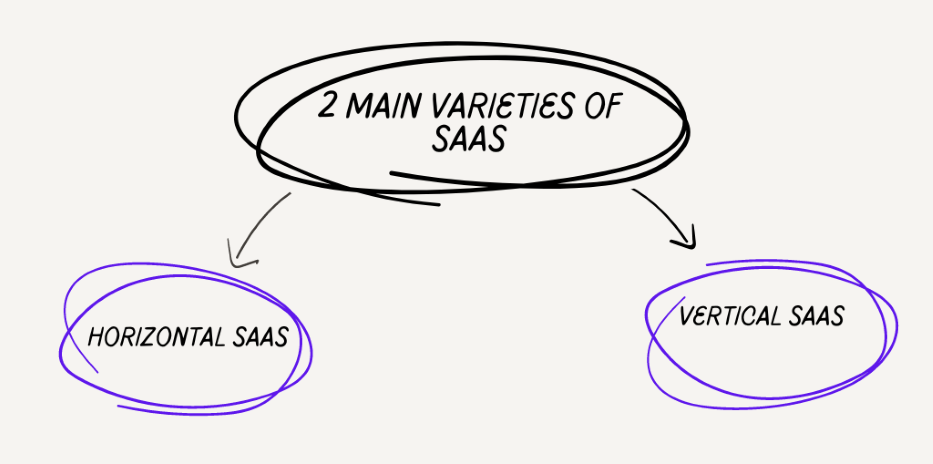How To Choose The Right SaaS Platform For Your Business
Have you ever wondered how different life would be without the concept of hybrid or remote roles? Everything would have stayed the same without SaaS platforms supporting remote work.
The revenue of the software as a service industry is expected to reach $282.20 billion by 2024. The SaaS (Software as a Service) concept is one of the most popular and successful methods for deploying cloud-based applications in business.
It enables enterprises to access sophisticated software applications without the need to invest in expensive gear or develop their own software from scratch. This provides advantages, such as lower maintenance costs and speedier deployment.
Businesses benefit from utilizing cutting-edge cloud technology by adopting SaaS, a cost-effective, easy-to-manage alternative to traditional software and applications.
What is SaaS?
Software as a Service (SaaS) is a cloud-based software delivery model where applications are hosted by a third-party provider and made available to users over the internet. Unlike traditional software installations, SaaS eliminates the need for users to download, install, or maintain software on their own devices.
For example, instead of purchasing and installing accounting software on individual computers, a business can subscribe to a SaaS accounting platform. This allows employees to access the software from any device with an internet connection, making it more convenient and flexible for remote work or collaboration.
How SaaS work?
SaaS applications are typically accessed through a web browser, and users pay a subscription fee to access the software on a monthly or annual basis. The provider manages all aspects of the software, including maintenance, updates, and security, freeing businesses from the burden of IT infrastructure management.
One common example of SaaS is cloud-based email services like Gmail or Outlook 365. Instead of hosting email servers on-premises, businesses can subscribe to these services and access email accounts through a web browser or email client.
Overall, SaaS offers businesses the flexibility, scalability, and cost-effectiveness they need to adapt to changing market conditions and streamline their operations in today’s digital age.
How to choose the best SaaS platform?
Choosing the right Software as a Service (SaaS) platform for your business is crucial for ensuring efficiency, productivity, and growth.
Here are some key factors to consider when making your decision:
1# Define Your Needs
Begin by identifying your specific business requirements and goals. Consider factors such as the size of your organization, industry regulations, and the functionalities you need from the software.
2# Assess Scalability
Look for a SaaS platform that can scale alongside your business as it grows. Ensure that the platform can accommodate increasing data volumes, users, and feature enhancements without compromising performance.
3# Evaluate Integration Capabilities
Determine whether the SaaS platform can seamlessly integrate with your existing systems and workflows. Compatibility with other software applications, such as customer relationship management (CRM) tools or accounting software, is essential for data consistency and workflow efficiency.
4# Consider User Experience
Prioritize user-friendly interfaces and intuitive navigation to facilitate user adoption and minimize training requirements. Test the platform’s usability through demos or trials to ensure it meets the needs of your team members.
5# Review Security Measures
Security is paramount when selecting a SaaS platform, especially for handling sensitive data. Verify that the provider implements robust security measures, such as encryption, access controls, and regular security audits, to safeguard your information from cyber threats.
6# Analyze Pricing Structure
Understand the pricing model of the SaaS platform, whether it’s based on subscription tiers, usage metrics, or customization options. Calculate the total cost of ownership, including subscription fees, implementation costs, and any additional charges, to assess affordability.
7# Seek Customer Support
Choose a SaaS provider that offers responsive customer support services to address any technical issues or inquiries promptly. Check customer reviews and testimonials to gauge the provider’s reputation for customer service and support.
8# Request References and Case Studies
Ask the SaaS provider for references from existing clients and case studies showcasing successful implementations in businesses similar to yours. This firsthand feedback can provide valuable insights into the platform’s performance and suitability for your needs.
By carefully evaluating these factors and conducting thorough research, you can make an informed decision and choose the best SaaS platform to support your business objectives and drive success.
What are the 2 main varieties of SaaS?
Software as a Service (SaaS) comes in two main varieties, each offering distinct advantages based on business requirements.
1# Horizontal SaaS
- Horizontal SaaS solutions cater to a wide range of industries and business functions, providing general-purpose applications that address common needs.
- Examples include productivity tools like Google Workspace (formerly G Suite), customer relationship management (CRM) platforms like Salesforce, and project management software like Asana.
- Horizontal SaaS applications are versatile and suitable for various industries, offering functionalities that benefit a broad spectrum of businesses.

2# Vertical SaaS
- Vertical SaaS focuses on serving specific industries or niche markets, providing tailored solutions designed to meet the unique needs and challenges of particular sectors.
- Examples include Electronic Medical Records (EMR) systems for healthcare, Property Management Software (PMS) for real estate, and Legal Practice Management (LPM) software for law firms.
- Vertical SaaS solutions offer industry-specific features, compliance with sector regulations, and specialized workflows, making them ideal for businesses operating within a particular domain.
Example: Company X, a healthcare provider, required specialized software to manage patient records and streamline medical billing processes. They opted for a Vertical SaaS solution designed specifically for healthcare organizations, ensuring compliance with industry regulations and tailored functionalities to meet their unique requirements.
Understanding the distinction between Horizontal and Vertical SaaS helps businesses choose the most suitable option based on their industry, operational needs, and long-term goals.
Whether opting for broad-ranging applications or specialized solutions, selecting the right type of SaaS can significantly impact business efficiency and success.
Conclusion
Choosing the right SaaS platform is a critical decision for any business. By considering factors like functionality, scalability, cost, support, and security, businesses can ensure they select a platform that meets their needs and helps drive success in the long term.
FAQs
What are the key factors to consider when choosing a SaaS vendor?
When selecting a SaaS vendor, it’s crucial to consider factors like reliability, security, scalability, customer support, and pricing models. Assess the vendor’s track record, data protection measures, ability to accommodate growth, responsiveness to inquiries, and pricing transparency to make an informed decision aligning with your business needs and objectives.
What should I look for in a SaaS solution?
When evaluating SaaS solutions, prioritize factors such as functionality, ease of use, scalability, integration capabilities, and pricing structure. Make sure the solution meets your needs, offers intuitive features, adapts to growth, integrates well, and offers transparent pricing.
What is the best platform to build a SaaS solution?
Choosing the best platform for building a SaaS solution depends on factors like scalability, security, customization options, and developer community support. Options include AWS, Azure, and Google Cloud Platform.
What are the 2 main varieties of SaaS?
The two main varieties of SaaS are vertical SaaS, which caters to specific industries, and horizontal SaaS, which serves a broad range of industries with general-purpose applications.
What is the best language for SaaS?
The best language for SaaS development often depends on factors like project requirements, team expertise, and scalability. Common choices include Python, JavaScript, Ruby, and Java.




